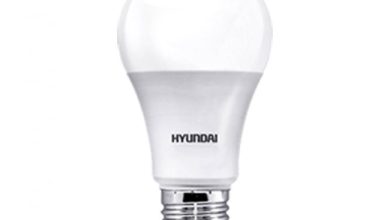Fast-Charging vs. Slow-Charging Stations: Pros and Cons
In the ever-evolving landscape of electric vehicles (EVs), charging infrastructure plays a pivotal role in their widespread adoption. As the demand for electric cars continues to surge, the choice between fast-charging and slow-charging stations becomes a crucial decision for both EV owners and charging network providers. Each option has its unique advantages and disadvantages, and understanding them can help shape a more efficient and accessible EV charging ecosystem.
1. Fast-Charging Stations
Fast-charging stations, also known as DC or elektromobiliu ikrovimo stoteles (direct current) fast chargers, are designed to provide significantly higher charging rates compared to slow-charging alternatives. These stations can charge an electric vehicle much quicker, making them an attractive choice for busy commuters, long-distance travelers, and those with time-sensitive charging needs.
Pros:
Rapid Charging Speeds: The most prominent advantage of fast-charging stations is their ability to recharge an EV’s battery to a usable level within 30 minutes or less, depending on the vehicle’s battery capacity and the charger’s power output. This is highly convenient for those on the go.
Accessibility and Convenience: Fast-charging stations are often located at key transportation hubs, highway rest stops, shopping centers, and urban areas. Their strategic placement makes them easily accessible, reducing range anxiety for EV drivers during long journeys.
Promoting EV Adoption: The presence of fast-charging infrastructure encourages more people to switch to electric vehicles. When drivers know that they can recharge quickly, they may be more inclined to embrace EVs as their primary mode of transportation.
Cons:
High Infrastructure Costs: Installing fast-charging stations requires significant investment due to the expensive hardware and higher electricity demand. As a result, their widespread deployment might be restricted, particularly in rural or less densely populated areas.
Battery Stress: Rapid charging generates higher heat levels, which can put more stress on the EV battery, potentially leading to slightly faster degradation over time. However, modern EVs are designed to handle fast charging without significant adverse effects.
2. Slow-Charging Stations
Slow-charging stations, also known as Level 2 chargers, offer a more moderate charging speed compared to their fast-charging counterparts. They are commonly found in residential areas, workplaces, and public parking lots, catering to drivers who have longer periods of parking time.
Pros:
Lower Infrastructure Costs: Slow-charging stations are more affordable to install and maintain, making them an attractive option for building an extensive charging network. This cost-effectiveness allows for a broader distribution of chargers, making EV charging accessible to a more extensive range of users.
Battery-Friendly: Slow charging puts less strain on the EV battery, contributing to slower battery degradation. This is especially beneficial for those who plan to keep their EV for an extended period or drive it over high-mileage.
Suitable for Overnight Charging: Overnight charging at home using slow-charging stations allows EV owners to start each day with a fully charged battery, offering peace of mind and sufficient range for daily commuting.
Cons:
Longer Charging Time: The most significant drawback of slow-charging stations is the time required to charge an EV fully. Depending on the vehicle and charger, it can take several hours to achieve a full charge, which might not be convenient for those with immediate charging needs or during long trips.
Range Anxiety: The slower charging rate might cause range anxiety for some EV drivers who need to cover long distances without access to fast-charging infrastructure.
Conclusion:
In conclusion, both fast-charging and slow-charging stations play critical roles in the development of a robust EV charging network. Fast-charging stations are essential for addressing range anxiety during long journeys and providing quick top-ups for busy commuters. On the other hand, slow-charging stations offer a more cost-effective and battery-friendly solution for residential and workplace charging.
To build a comprehensive charging infrastructure, a balanced approach that combines fast-charging stations at key locations with a network of slow-charging stations in residential and commercial areas is necessary. The ongoing advancements in battery technology and charging infrastructure will continue to bridge the gap between fast and slow charging, ultimately accelerating the adoption of electric vehicles worldwide.




